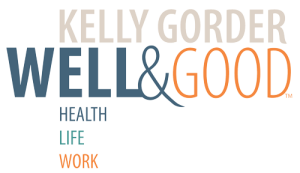As a coach, one of the most rewarding things I’ve been able to take into my personal life is how to have better conversations with people I care about. Before, I had no idea how to ask evocative questions, reflect back a simple statement so the other person feels heard, or simply just be quiet so someone could actually think about their own answer instead of me rushing to solve for them with my opinions and bias.
(Disclaimer: I don’t always wear this coach hat and am human, so still enjoy telling people what I think they should do on occasion!)
But, back to task…
It’s easy to get into a rut of asking the same questions with the intention of genuinely checking in, only to get flat, one-word answers. Does any of this sound familiar?
- What’s up? Nothing.
- How are you? Fine.
- What’s new? Nothing
- Did you have a good day? Yes.
- Do you need anything? No.
How frustrating!
Whether you’re a partner, friend, parent, child, sibling, or manager, you have the opportunity to learn more about those most important to you by communicating for connection, instead of transacting information.
When we communicate for transaction, we are exchanging information without a lot of meaning. This typically involves a lot of ‘closed questions’. These are questions that are structured to get a one word answers (often yes or no) without a lot of depth for expansion or learning on either side. Examples of closed questions:
- Do you go to the gym?
- What is the speed limit?
- What kind of salad dressing do you want?
Sometimes this type of communication is great! It’s efficient and effective if we are avoiding traffic tickets or ordering a salad. But, when we want to know what’s important to someone or they need help sorting out a bigger topic, closed questions can be really limiting.
If you’re really looking to learn and connect, ‘open questions’ are a great alternative. These are designed to be more curious, allow someone to consider a more personal answer, and think about something in a deeper way. Here are related questions from above, asked in an ‘open question’ structure:
- What’s important to you about incorporating movement and fitness into your life?
- What do you enjoy about driving a fast car?
- I noticed you’ve been eating a lot of salads at lunch. How has that impacted your energy level in the afternoon?
These topics are pretty neutral just for example’s sake. But, check out the chart below for examples of more personal questions and suggestions for ways to open them up for a deeper conversation.
Another useful conversational tool when asking questions isn’t a question at all. It’s simply reflecting back an important part of what another person has said. A reflection helps ensure the listener understands the other person and also lets the other person know they are heard. Often, hearing a reflection back is super helpful for the person talking to make sense of overwhelm. When a listener pulls out the important points of a swirl, it can create some clarity and calm for the person talking.
As a listener offering a reflection, you don’t do much talking and you don’t solve. You look for: repetition in themes, things that feel emotionally charged (positive or negative), anything that seems important. Examples of reflections:
- Movement is a key part of recovery from your injury.
- Having a fast car helps you manage a busy schedule.
- Eating salads seemed like a good idea to lose 10 lbs for your vacation.
An important part of offering a reflection is that you don’t have to be right! You are just trying to understand and be a mirror for the other person and what they said. Sometimes hearing back something that doesn’t land 100% allows someone to clarify and have more conviction about their answer.
Open questions and reflections are just some basic communication tools that can start making conversations more impactful, and they do take practice and patience. But, at the foundation of all of this are ways of being when you’re having a conversation with someone. It’s how you communicate vs. what you communicate. It’s not what you say, but how you show up to talk to someone.
- Be present. Put your phone away, stop doing other things, and look them in the eye while you talk. As humans, we say so much non-verbally with our body language and facial expressions. When you’re fully present, you not only hear what the other person is saying, but see how they are saying it. (Quick article for more on this here.)
- Give space and be quiet. It’s so easy to want to fill a quiet moment while someone thinks. Quiet can be really uncomfortable for the listener. We see someone struggling to find an answer, and with the best intentions, want to jump in and move on, or re-ask a question to make it easier. Sometimes answers don’t come easily, but that doesn’t mean they aren’t the right answer.
- Don’t solve for the other person. This is a hard one. We’ve all been there, especially with those we know well. We think we know them better than they know themselves, and have the answer! Who doesn’t love being right? However, when the listener jumps in, the other person doesn’t find their own autonomy to create their own conclusions or solutions. It can seem that we think they can’t solve their own stuff. Connection implies trust and patience on both sides. As the listener, we have to believe in the other person and their ability to tap into their strengths, resources, and values to find a way that is their way, not our way.
In this month’s Wellness Wednesday, we will talk about lots of ways to ask questions, listen, and make some space for those with whom we care about connecting. Giving people time and space, and believing in their ability to know themselves best, is a super valuable gift.


